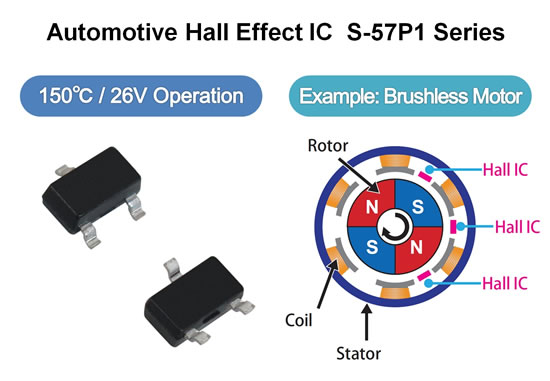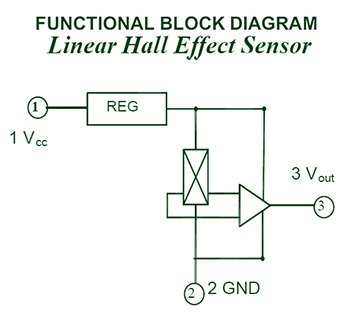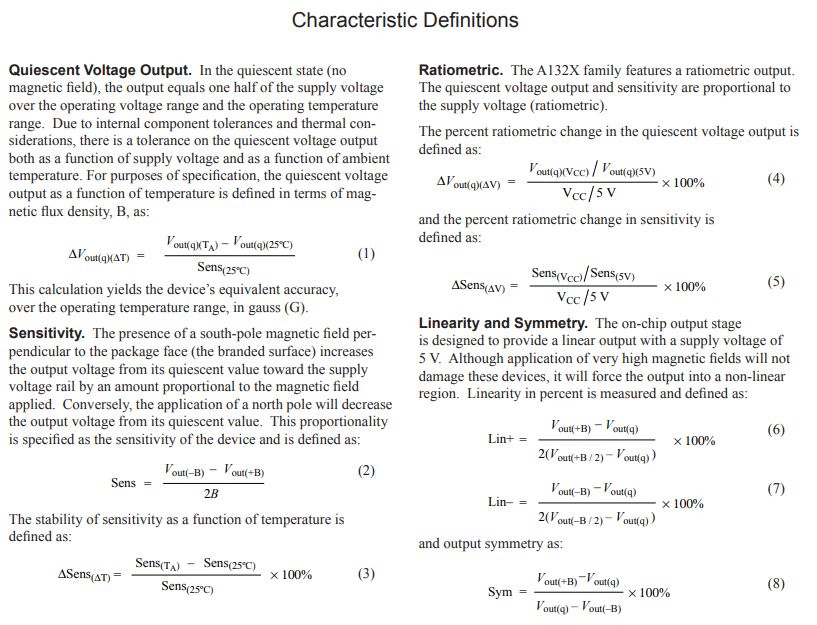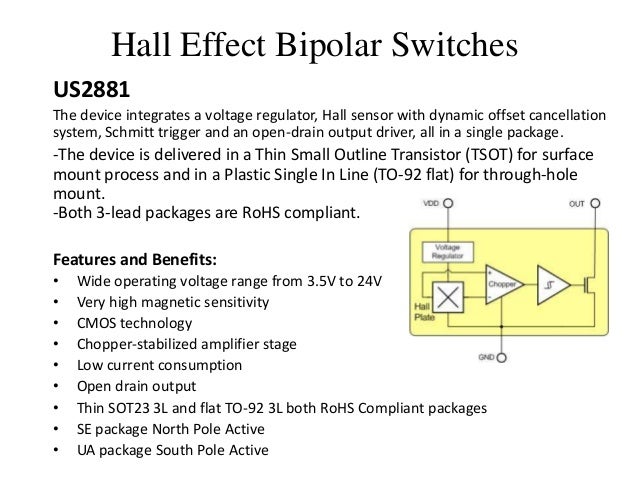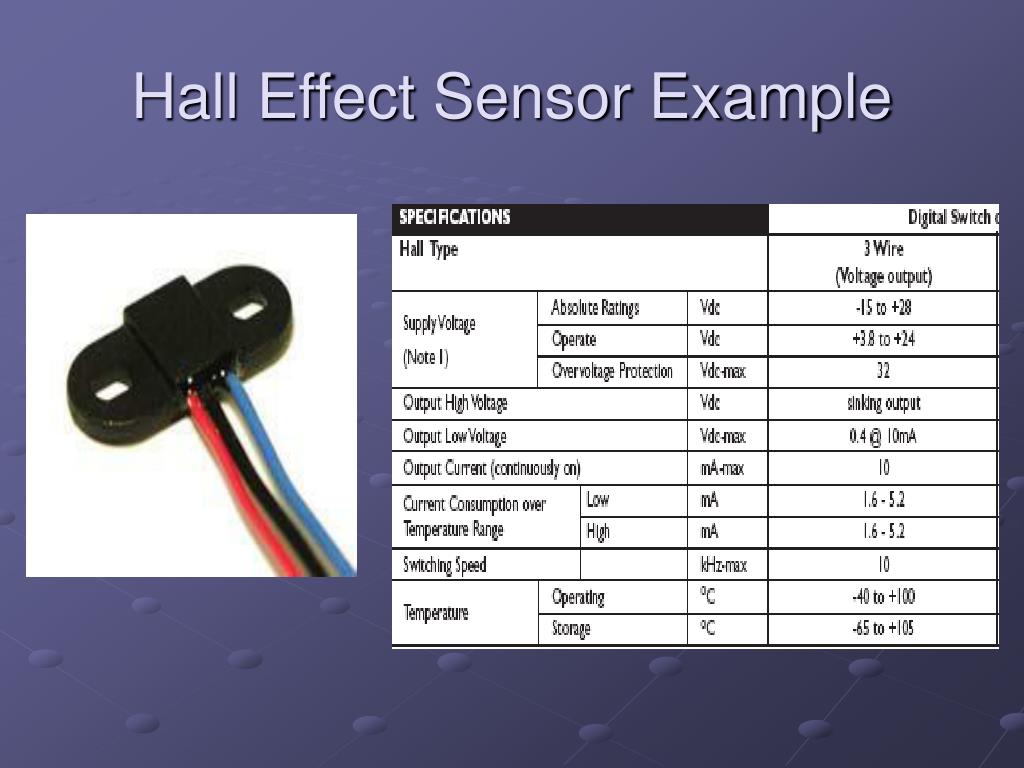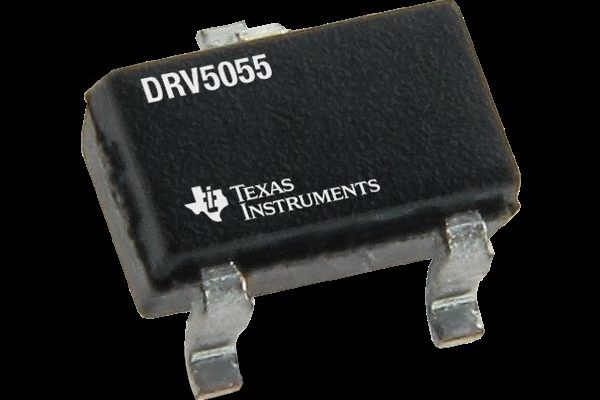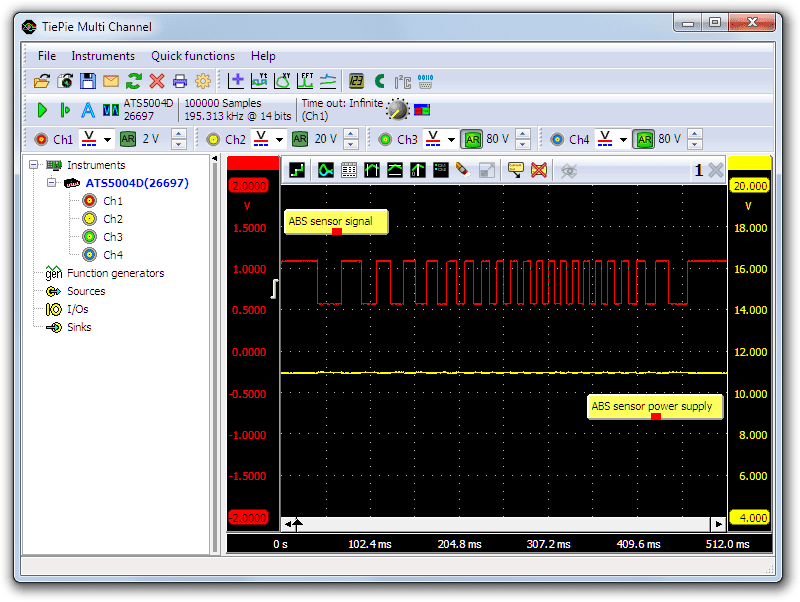Hall Effect Sensor Output Voltage Range

Wide operating temperature range.
Hall effect sensor output voltage range. This cycle repeats itself to create the digital output from the gear tooth hall effect sensing device. Hall effect magnetic sensor. Superior temperature stability. Linear output hall sensor.
Voltage levels can also change from system to system depending on current flow and resistor values but a clear square wave pattern should be visible. As the pulse wheel rotates it passes through and disturbs the sensor s magnetic field to modulate the hall voltage. The sensors are accompanied by a pulse wheel. The third hall effect sensor distance a 324 reads the magnetic field gradually.
Zero current output voltage is midway between the supply voltages that maintain a 4 to 8 volt differential. The voltage levels are different and much lower than a 3 wire hall effect abs sensor because of the low currents. The output voltage called the hall voltage v h of the basic hall element is directly proportional to the strength of the magnetic field passing through the semiconductor material output h. Frequently a hall sensor is combined with threshold detection so that it acts as and is called a switch.
When a magnet approaches the face of the sensor the output voltage will increase or decrease depending on which side of the magnet you are using. Hall effect sensors are used for proximity sensing positioning speed detection and current sensing applications. As they consume power hall effect cmp sensors require voltage feed and earth circuits. As the tooth passes beneath the hall sensor the circuit becomes activated and pulls this 5 volt signal to ground.
Source voltage is now present in the signal circuit. A wide operating voltage range from 2 5 v to 38 v with reverse polarity protection up to 22 v makes the device suitable for a wide range of industrial applications. A hall effect sensor is a device to measure the magnitude of a magnetic field. Their output is usually of the push pull type and is ratiometric to the supply voltage with respect to offset and gain.
This output voltage can be quite small only a few microvolts even when subjected to strong magnetic fields so most commercially available hall effect devices are manufactured with built in dc amplifiers logic switching circuits and voltage regulators to improve the. Its output voltage is directly proportional to the magnetic field strength through it. Analog output sensors are available in voltage ranges of 4 5 to 10 5 4 5 to 12 or 6 6 to 12 6 vdc. Open in new find other hall effect latches switches.
They typically require a regulated supply voltage to operate accurately. 2 5 to 38 v. Internal protection functions are provided for reverse supply conditions load dump and output short circuit or overcurrent. Commonly seen in industrial applications such as the pictured pneumatic cylinder they are also used in consume.
When no magnetic field is sensed this sensor will output half of the source voltage 2 5v. No external regulator required. 11 mv mt oa see figure 17 23 mv mt pa 45 mv mt ra 90 mv mt va 23 mv mt ca 45 mv mt ea supports a wide voltage range. Non zero current response is proportional to the voltage supplied and is linear to 60 amperes for this particular 25 a device.
Hall effect current sensor with internal integrated circuit amplifier.






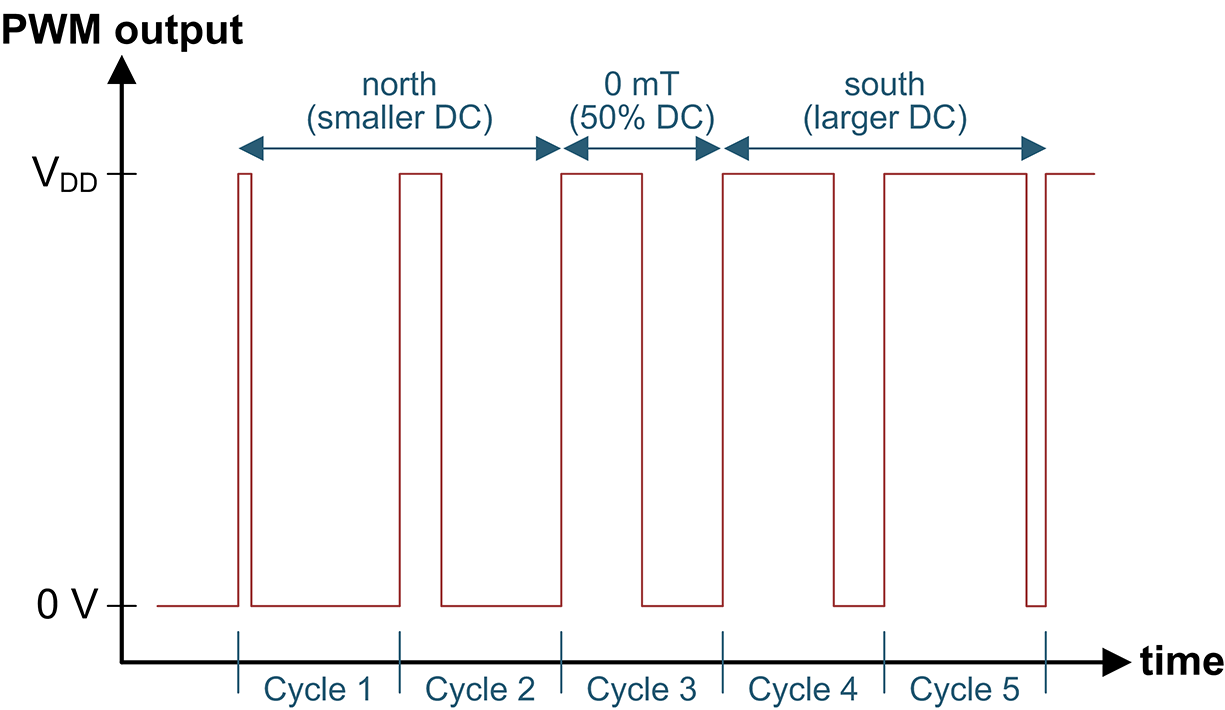






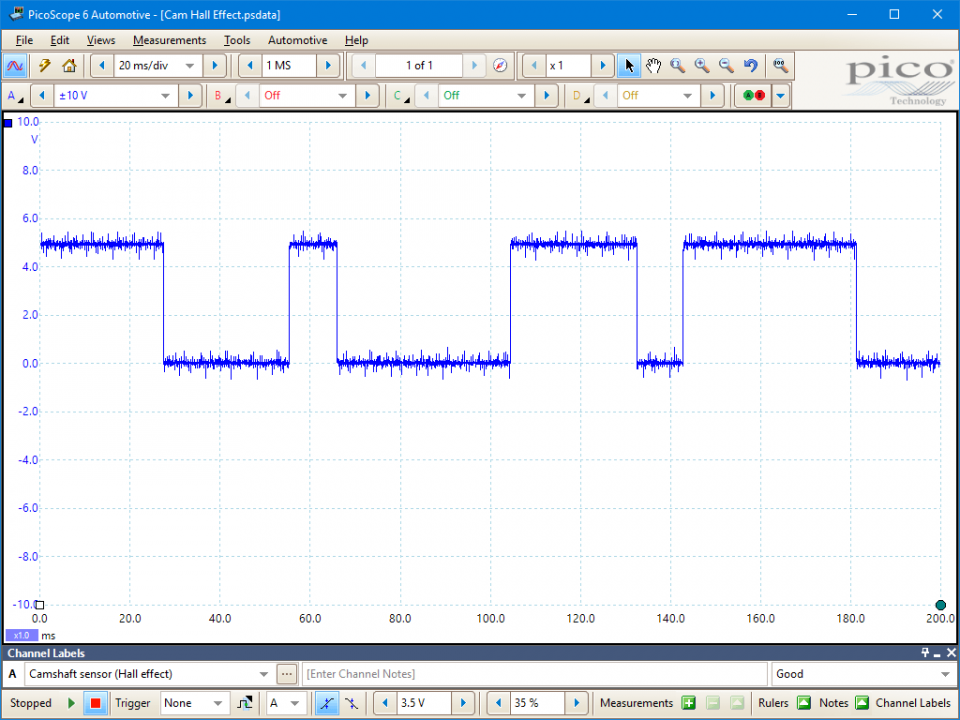
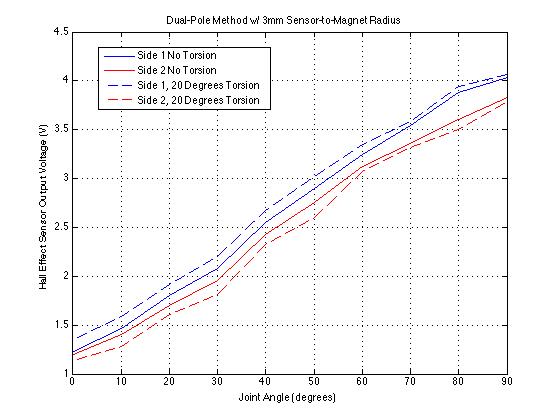

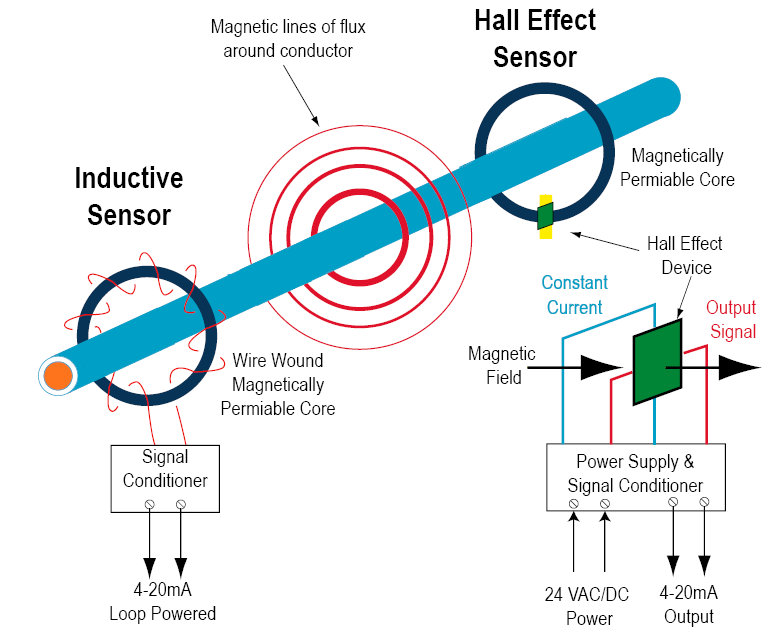

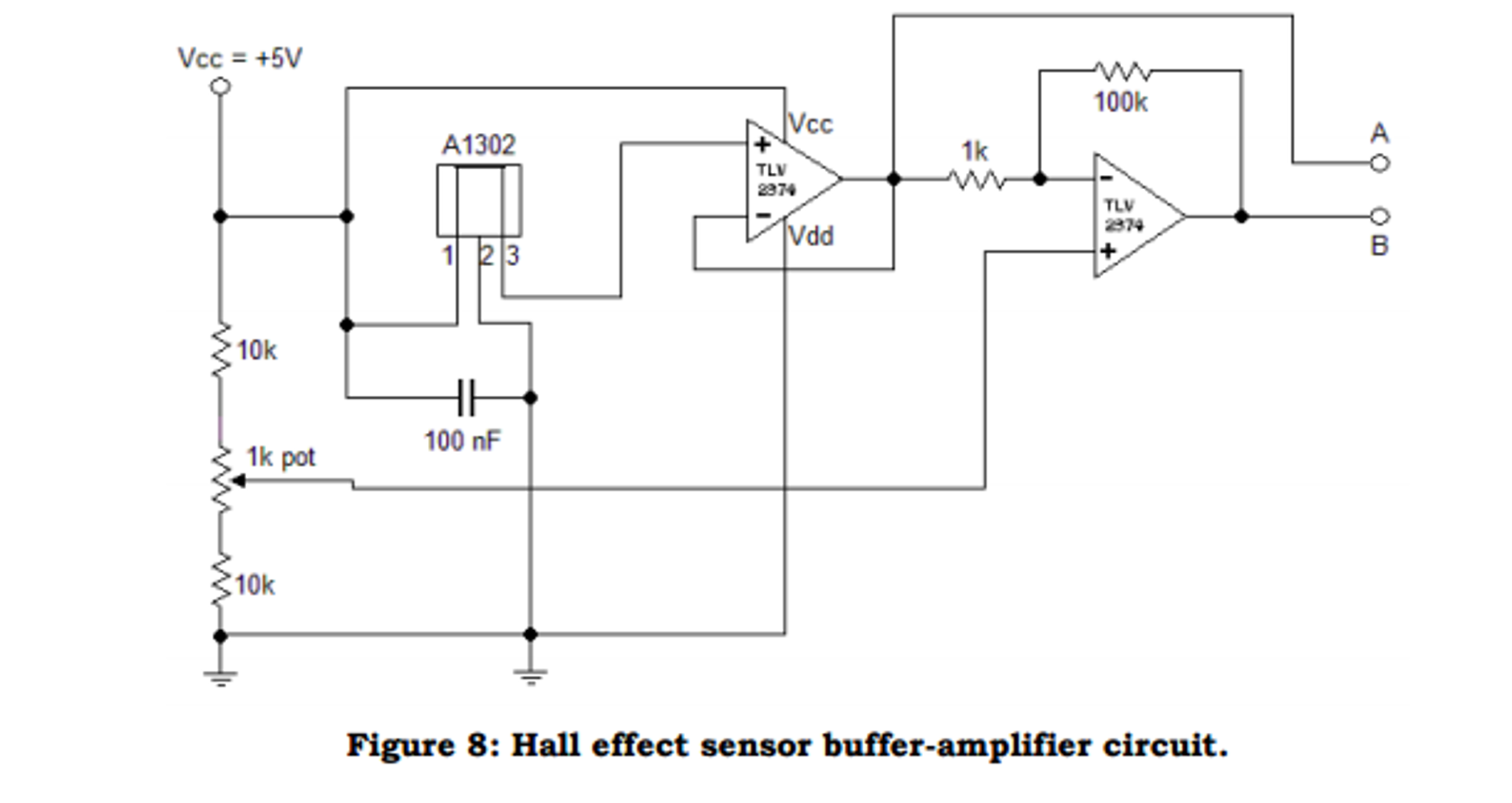
.jpg)
